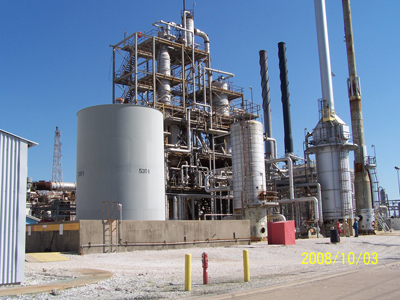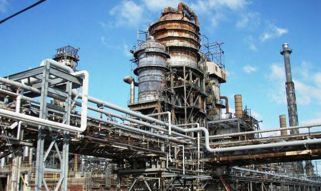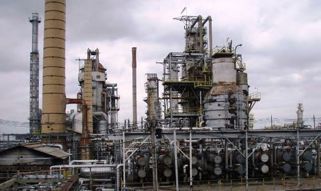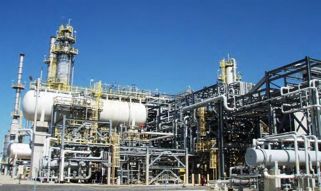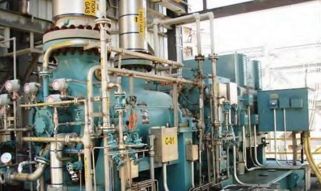History
The Phthalic Anhydride (PA) plant is a BASF process. The reactors were started up in mid 1971. During 1981, each of the four Phthalic Anhydride reactors was modified to increase the allowable orthoxylene loading from 40 g/nm3 to 60 g/nm3. The project provided a larger salt bath coolers and upgraded emergency relief capacity as well as other safety features.
In 1996, the unit was again expanded by increasing the size of the salt bath coolers on two of the four reactors by increasing salt bath capacity and upgrading safety systems to allow orthoxylene loading near 80 g/nm3.
In 2006, the plant was derated to 110 Mlbs./year by isolating one of the two banks of switch condensers and limiting the production to only two reactors.
Overview
The Phthalic Anhydride Unit consists of three basic areas: oxidation, purification, and utilities. The oxidation area, where the crude Phthalic Anhydride is produced, includes the following equipment: compressors, reactors, switch condensers, circulating oil system and tail gas incinerators. The purification area, where the crude PA is purified to 99.8% assay, consists of decomposers, distillation columns, a separate hot oil system and a distillation incinerator. In addition, there is a large utility system within the unit consisting of various heat exchangers, steam drums and boiler feed water equipment to produce 650#, 450#, 150# and 30# steam.
The reaction of orthoxylene to Phthalic Anhydride is highly exothermic and heat is removed from the reactor in two ways: (1) by 450# steam generated at the reactor and (2) by an increase in temperature of the air stream going through the reactor.
The product gas leaving the reactor is pre-cooled by the gas cooler where 150# steam is produced. The pre-cooled gas is further cooled in the switch condensers where the crude PA is crystallized on the condenser tube bundles. The waste gas from the switch condensers flows to the tail gas incinerators where the waste organics are thermally oxidized and 650# steam is generated. The crystallized crude Phthalic Anhydride is melted off the condenser tubes and gravity flows to drain tanks. It is then pumped to crude storage tanks for feed to the purification area.
The circulating oil system alternately provides hot and cold oil to the switch condensers for crystallizing and melting the crude PA in the condensers.
Crude Phthalic Anhydride collected from the switch condensers contains impurities such as phthalic acid, benzoic acid, o- and p- toluic acid, maleic anhydride and traces of other compounds. The crude Phthalic Anhydride is thermally treated to dehydrate phthalic acid and maleic acid and to convert product color-related impurities into compounds that can be readily removed during the distillation step. The treatment step is operated under a slight vacuum to remove the water of dehydration and some low boiling materials, such as maleic anhydride and benzoic acid.
The treated crude Phthalic Anhydride is then fed to a two-stage vacuum distillation system. The low boiling impurities such as maleic anhydride, benzoic acid and toluic acid, along with some Phthalic Anhydride, are removed as overheads from the first column. In the second column, the high boilers are intermittently drawn off the bottoms and pure Phthalic Anhydride is taken off overhead.




